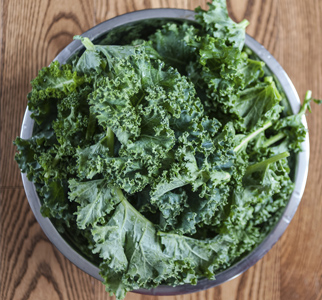Carrots—and More—for Healthy Eyes
April 2016
Carrots—and More—for Healthy Eyes
Here’s a possible eye-opener: Carrots aren’t the only sight-saving veggies. In fact, many foods can give you the nutrients you need to keep your eyes healthy. In a recent study, leafy greens were found to protect against glaucoma.

An eye on food
In JAMA Ophthalmology, researchers explored the link between glaucoma and diets low in nitrate. Glaucoma is when the pressure in the eye becomes too high. This built-up pressure can harm the optic nerve, the part of the eye that links to your brain. Gradually, you may lose your peripheral vision. Untreated, glaucoma can lead to blindness. Nitrate is a compound that may protect the optic nerve from this damage.
To see if nitrate may play a role in better vision, the researchers looked at the health and diets of more than 100,000 adults. Over 25 years, these people answered periodic surveys. They were asked if they had developed any diseases, including glaucoma. They also reported what they ate on a regular basis.
Leafy greens are high in nitrate. These include veggies like kale, spinach, chard, and romaine lettuce. From the data, researchers found that people who ate more leafy greens were less likely to have developed glaucoma over the study period.
Feast for your eyes
Nitrate may not be the only reason leafy greens are good for your eyes. They also contain valuable vitamin E. This nutrient may help keep the retina healthy. That’s the part of the eye that first captures what you see and sends it to the optic nerve. Other foods full of this vitamin include sunflower seeds and nuts, such as almonds.
Below are a few more vision-boosting nutrients and their food sources.
Lutein
This nutrient, like the more familiar beta-carotene in carrots, is a carotenoid. It gives foods their yellow color. It also shields the retina from harmful ultraviolet (UV) light. By doing so, it may help prevent age-related macular degeneration (AMD). AMD is an eye disease that can lead to blindness. It may also protect against cataracts. You can find lutein in foods like egg yolks, corn, squash, and orange peppers.
Vitamin C
Vitamin C helps keep the blood vessels in your eyes healthy. Like lutein, it may prevent two of the most common eye problems: AMD and cataracts. Citrus fruits are champions of vitamin C. These foods also deliver a good dose of it: broccoli, berries, bell peppers, and tomatoes.
Zinc
Your eyes—specifically, your retinas—contain high amounts of zinc. This mineral protects your eyes from UV rays and other harmful light. Seafood, such as oysters, provides plenty of zinc. You can also fill up on the mineral by eating lean meats, beans, and nuts.
Omega 3 fatty acids
Two omega 3 fatty acids—DHA and EPA—may be particularly good for eye health. They may help prevent dry eye syndrome. That’s when your eyes may not make enough tears. It can lead to pain, burning, itching, and redness. The best food sources for these fatty acids are fish like salmon, tuna, and sardines, as well as flaxseeds and walnuts.
Here are other ways to keep your vision in focus.
Online resources
Updated:
March 21, 2017
Sources:
An Eye on Nutrition: The Role of Vitamins, Essential Fatty Acids, and Antioxidants in Age-Related Macular Degeneration, Dry Eye Syndrome, and Cataract. M. McCusker, et al. Clinics in Dermatology. 2016;34(2):276-85., Are There Nutrients That Support Eye Health? J. Balla Kohn. Journal of the Academy of Nutrition and Dietetics. 2015;115(9):1548., Association of Dietary Nitrate Intake with Primary Open-Angle Glaucoma. J.H. Kang, et al. JAMA Ophthalmology. 2016. Published online ahead of print, doi: 10.1001/jamaophthalmol.2015.5601.
Reviewed By:
Turley, Ray, BSN, MSN